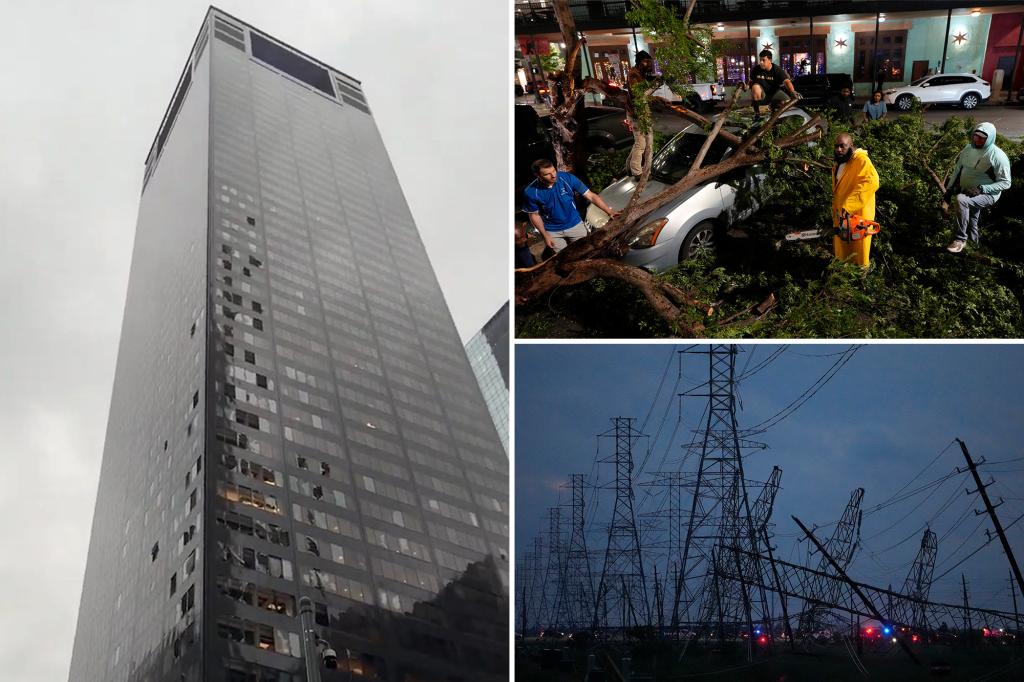A severe thunderstorm in Houston, Texas, caused by a storm system threatening torrential rainfall, led to at least four fatalities and left over 1 million customers without power. Despite several tornado warnings being issued for the Houston metro area, strong winds were believed to be the main cause of damage. Winds exceeding 70 mph toppled trees, caused windows to break in high-rise buildings, and led to the collapse of transmission towers holding power lines. The Harris County Sheriff’s Office advised people to stay off the roads due to blocked streets and power outages exceeding 800,000 in the Houston metro. Other nearby counties were also experiencing outages, bringing the total number of customers without power in the state to over 1 million. Houston Mayor John Whitmire confirmed the death toll of at least four and requested state assistance for the recovery efforts.
Reports from a customer at the Hyatt Regency downtown described the roof blowing out, with rain and debris falling into the lobby. Staff at the hotel worked to keep people safe and away from the debris. Windows in several downtown buildings, including the Wells Fargo Plaza, were also blown out during the severe storm. Despite the inclement weather, Minute Maid Park appeared to be impacted by wind and water seeping in, although the baseball game played by the Houston Astros continued. Whitmire urged residents to stay at home, describing the downtown area as a mess and emphasizing the need for everyone to be cautious.
Local residents likened the impact of the storm to that of a hurricane, despite the severe weather lasting less than an hour. Ground stops were issued at Bush Intercontinental Airport and Houston William P. Hobby Airport due to the storm. The Houston school district decided to close all public schools on Friday, with plans to reopen on Monday. The severe thunderstorms were expected to transition into a flood threat overnight as the already saturated grounds were predicted to receive an additional 2-5 inches of rainfall. Emergency crews and officials were on high alert, working to assess and respond to the aftermath of the storm while preparing for potential flooding in the area.
In addition to the devastation caused by the strong winds, power outages, and structural damage, the severe thunderstorm in Houston underscored the importance of preparedness and response strategies in the face of extreme weather events. Local authorities, emergency services, and residents worked together to navigate the challenges posed by the storm, with a focus on ensuring public safety and minimizing further damage. The impact of the storm on infrastructure, transportation, and public services highlighted the vulnerability of the region to severe weather conditions and the need for ongoing resilience-building efforts. As the community rallied to support those affected by the storm and work towards recovery, the event served as a stark reminder of the unpredictability and force of natural disasters, reinforcing the importance of proactive planning and response measures in safeguarding lives and property. Looking ahead, lessons learned from the storm in Houston will inform future efforts to enhance emergency preparedness, response coordination, and community resilience in the face of similar events.


